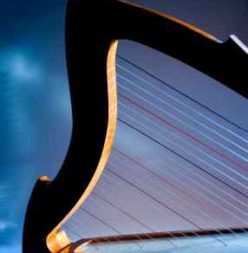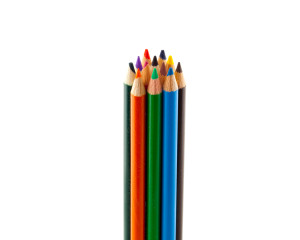Practicing plateaus–we all have them. Do you remember when you used to wake up, already excited to get to the harp and practice? Has it been a long time? Do you feel stuck, as if your practice really isn’t moving you forward? That’s the very definition of a practicing plateau, and it happens to all of us. Believe it or not, there are many ways to get off that practicing plateau, many of which don’t even involve playing the harp.
This post is about all those ways you can practice, learn music and harp technique, and improve your musicianship. For most of these suggestions, you don’t even need a harp!! But by far the best news is this: all of these techniques will give your harp playing a big jump start. So if you’re stuck on a practicing plateau, do something completely different! (Remember Einstein’s definition: “Insanity: doing the same thing over and over again and expecting different results”? This applies to music seven times seven).
Clapping Rhythms
If you are starting a new piece, or even practicing something you know pretty well but stumble sometimes over the rhythm, stop playing it badly and do this instead. Clap the rhythm until it’s totally easy. If you need to do two counter-rhythms, the easiest way is to tap one on each leg, or clap one and tap the other with your foot.
You can also use the metronome to play one rhythm (say, eighth notes) while you clap the other (say, triplets) over it. (This suggestion came from my daughter, a student at Interlochen Arts Academy and a passionate French horn player).
Only when the rhythm is easy with your hands and/or feet should you try the piece on your harp. A little patience with this seeming delay will net you huge gains in learning your music.
Dancing & Singing
Take the clapping idea a step further and do it with your feet, dancing your piece around your living room. If you sing while you dance, that’s even better. You’ve heard it before but it’s really true: if you can sing it, you can play it. My teacher has always had me singing the jazzy rhythms I love with do-wahs. Have fun and get the rhythm “in your body” at the same time!
Mental Practice: Score Review
If you want to really know your piece, even if you don’t plan to memorize it, study the notation away from the harp. Use a highlighter to mark lever changes, dynamics, and other things you might otherwise miss. Use colored pencils to color code the repeating patterns. Write in chords, fingerings, and brackets. Draw a colorful star or arrow to mark the beginning of each section; this way your eyes will go right to the spot when you need to glance at your music.
If you don’t want to mark up your music, try putting it in page protectors and then using wet-erase markers. Later, you can erase the marks and get back to your clean score if you want to.
Color is a wonderful learning aid! Sometimes, I ask a visually-oriented student to map an entire short piece with colored lines on a plain piece of paper. This process will teach you a lot about the texture and design of the music.
Visualization
Go one step further with your mind and visualize playing your piece perfectly. Don’t just imagine the music in front of you, though you can do that, too. Imagine your hands playing each passage with grace and the dynamics you want. I like to do this when I’m about to fall asleep. Experiment with what works best for you.
Arranging and/or Learning Music at the Computer or Playing on Another Instrument
If you want to really know a tune, use music notation software to arrange it, or at least to notate your own copy. Notation software will also play the music back for you, which can be a great boon for learning!
If you don’t use computer notation software, you can write out the piece by hand, which is great kinesthetic reinforcement. Another idea is to try playing your piece on another instrument. Of course, a piano is great if you have one handy and know how to play it, but how about picking out the melody on a recorder or xylophone?
Listening
This idea may seem obvious, but when was the last time you listened to a recording of the music you’re practicing? Repeated listening will really teach you the intricacies of the music. Worried about copying someone else’s style? Relax. It would be almost impossible to sound like Kim Robertson or Deborah Henson-Conant anyway, don’t you think? You will always play with your own personal quirks, and that’s as it should be. However, you can purposefully try to play the piece with tempo, dynamics, or other features of a great performer. It’s a wonderful way to learn.
(Later, if the recording isn’t too fast, you can even try playing along. Some music comes with CDs that lend themselves to that. Though this is outside the subject of this article, it really helps and can also get you off your practicing plateau).
Music Theory Study
Last, but not least, no matter what level you play at, you can vastly improve your understanding of music by studying music theory away from the harp. If you’re a beginner, drill your notes and rhythms with flash cards. Whether you’re brushing up on notes, intervals, key signatures, or chords, you can find lots of resources to help you. Use an app, or drill at the computer with drills like these.
I hope you use these practical ideas to shake up your practice and move from any plateaus you’ve been experiencing. Let me know how it goes!
This post is adapted from material that I originally published in the ezine, Notes from the Harp.
Photo by GeoffreyWhiteway, courtesy of and copyright Free Range Stock, www.freerangestock.com

